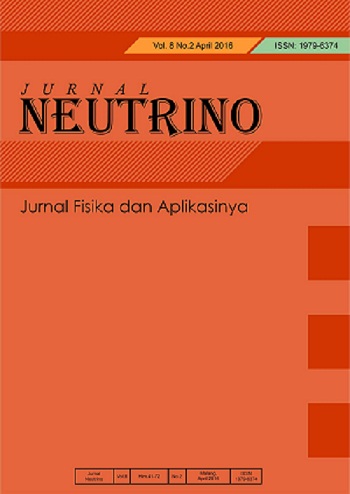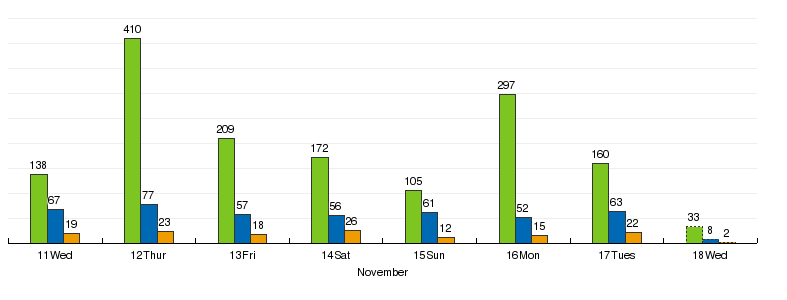PHASE ANALYSIS AND PHYSICAL PROPERTIES OF B2O3-ADDED ZIRCON CERAMICS SINTERED AT 1300 °C
Abstract
Keywords
Full Text:
PDFReferences
G. Suárez, S. Acevedo, N. M. Rendtorff, L. B. Garrido, and E. F. Aglietti, “Colloidal processing, sintering and mechanical properties of zircon (ZrSiO4),” Ceram. Int., vol. 41, no. 1, Part B, pp. 1015–1021, Jan. 2015.
D. Singh, D. Zhu, and Y. Zhou, Design, Development, and Applications of Engineering Ceramics and Composites. John Wiley & Sons, 2010.
N. M. Rendtorff, S. Grasso, C. Hu, G. Suarez, E. F. Aglietti, and Y. Sakka, “Zircon–zirconia (ZrSiO4–ZrO2) dense ceramic composites by spark plasma sintering,” J. Eur. Ceram. Soc., vol. 32, no. 4, pp. 787–793, Apr. 2012.
C. Veytizou, J.-F. Quinson, and A. Douy, “Sol–gel synthesis via an aqueous semi-alkoxide route and characterization of zircon powders,” J. Mater. Chem., vol. 10, no. 2, pp. 365–370, Jan. 2000.
Z. N. Kwela, “Alkali-fusion processes for the recovery of zirconia and zirconium chemicals from zircon sand,” Dissertation, University of Pretoria, 2001.
H. Poernomo, D. Biyantoro, and M. V. Purwani, “Kajian Konsep Teknologi Pengolahan Pasir Zirkon Lokal yang Mengandung Monasit, Senotim dan Ilmenit,” EKSPLORIUM, vol. 37, no. 2, pp. 73–88, Dec. 2016.
H. Poernomo, “Informasi umum zirkonia,” Badan Tenaga Nukl. Nas. Pus. Teknol. Akselerator Dan Proses Bahan Yogyak., 2012.
V. C. Pandolfelli, J. A. Rodrigues, and R. Stevens, “Effects of TiO2 addition on the sintering of ZrO2·TiO2 compositions and on the retention of the tetragonal phase of zirconia at room temperature,” J. Mater. Sci., vol. 26, no. 19, pp. 5327–5334, Oct. 1991.
K. B. Lee, S. H. Jung, G. P. Hong, B. R. Jo, J. S. Moo, and J. B. Kang, “Effect of SiO2, Al2O3 and clay addition on the sintering characteristics of zirkon,” Korean J. Matter, vol. 28, pp. 352–356, 2008.
R. Nurlaila, “PENGARUH PENAMBAHAN B2O3 PADA SINTESIS SISTEM KERAMIK PADAT ZrO2-SiO2 DENGAN VARIASI TEMPERATUR SINTE,” Tesis, ITS, Surabaya, 2016.
S. Pratapa, W. D. Handoko, U. Nurbaiti, and Mashuri, “Synthesis and characterization of high-density B2O3-added forsterite ceramics,” Ceram. Int., vol. 43, no. 9, pp. 7172–7176, Jun. 2017.
R. Nurlaila, Musyarofah, N. F. Muwwaqor, Triwikantoro, A. Kuswoyo, and S. Pratapa, “Phase analysis of ZrO2-SiO2 systems synthesized through Ball milling mechanical activations,” 2017, p. 030122.
N. D. Lestari, “Sintesis Serbuk Nano-Zirkon Dengan Metode Penggilingan Dan Anil,” Undergraduate, Insitut Teknologi Sepuluh Nopember, 2017.
Figure 2. SEM micrographs of fracture of zircon in the B2O3-added ceramics.
a= sample N0; b= sample N6
a
b
P. M. Kibasomba et al., “Strain and grain size of TiO2 nanoparticles from TEM, Raman spectroscopy and XRD: The revisiting of the Williamson-Hall plot method,” Results Phys., vol. 9, pp. 628–635, Jun. 2018.
A. I. W. S. Ramadani and S. Pratapa, “LINE BROADENING CORRECTION IN X-RAY DIFFRACTION ANALYSIS FOR NANOMATERIALS CHARACTERIZATION USING CALCINED YTTRIUM OXIDE POWDER AS A STANDARD MATERIAL,” Proceeding Int. Conf. Res. Implement. Educ. Math. Sci. 2015, Jun. 2015.
T. Puclin, W. A. Kaczmarek, and B. W. Ninham, “Mechanochemical processing of ZrSiO4,” Mater. Chem. Phys., vol. 40, no. 2, pp. 73–81, Mar. 1995.
J. Hao, Z. Qingfeng, D. Ai, J. Ma, C. Deng, and J. Xu, “Structure and high temperature physical properties of glass seal materials in solid oxide electrolysis cell,” J. Power Sources, vol. 214, pp. 75–83, Sep. 2012.
DOI: https://doi.org/10.18860/neu.v14i1.12663
Refbacks
- There are currently no refbacks.
Copyright (c) 2021 Fikriyatul Azizah Su'ud, Suminar Pratapa, Musyarofah Musyarofah

This work is licensed under a Creative Commons Attribution-NonCommercial-ShareAlike 4.0 International License.
Published By:
Program Studi Fisika Fakultas Sains dan Teknologi Universitas Islam Negeri (UIN) Maulana Malik Ibrahim Malang, Indonesia
B.J. Habibie 2nd Floor
Jl. Gajayana No.50 Malang 65144
Telp./Fax.: (0341) 558933
Email: neutrino@uin-malang.ac.id
This work is licensed under a Creative Commons Attribution-NonCommercial-ShareAlike 4.0 International License
View My Stats










